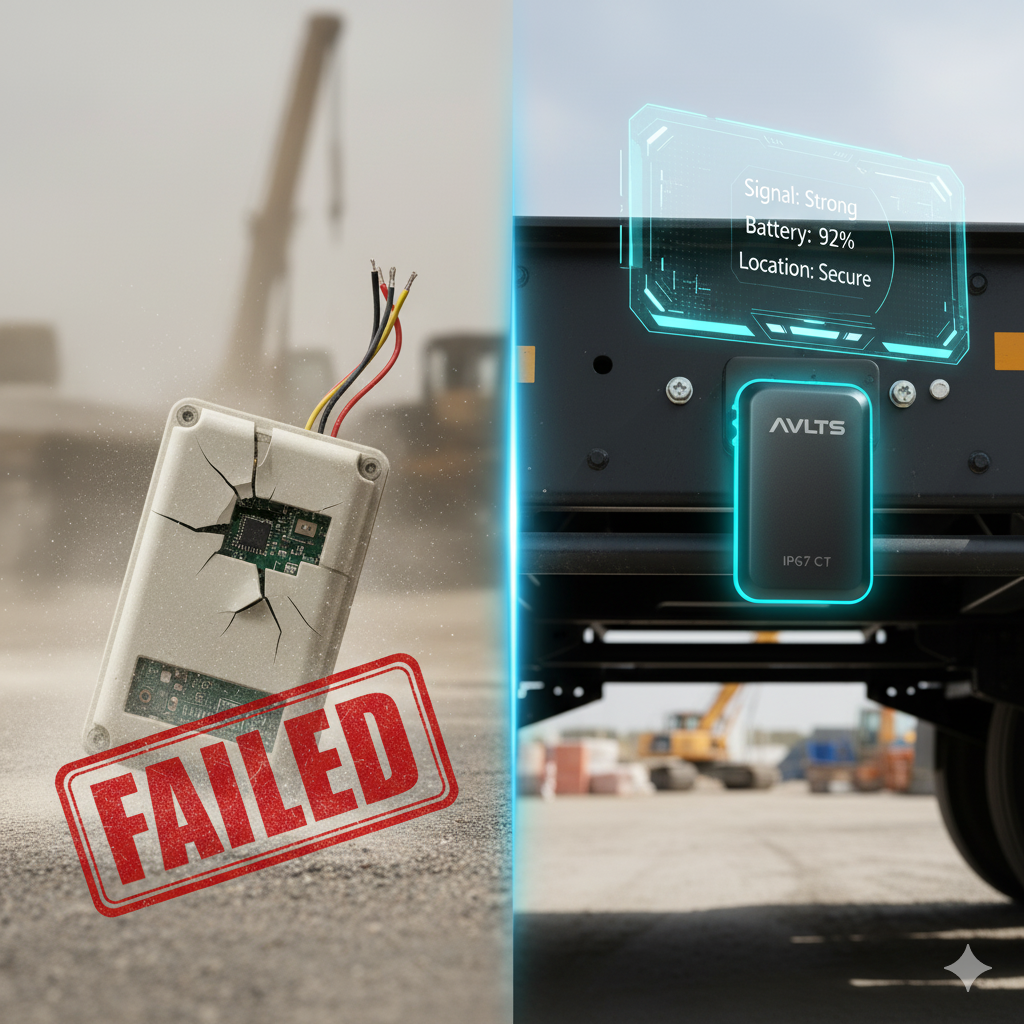Why Standard GPS Trackers Fail on Heavy Machinery (And What You Need Instead)
If you’ve ever installed a cheap GPS tracker on an excavator, loader, or dump trailer—only to find it dead, disconnected, or completely silent after a few weeks—you’re not alone.
Standard GPS trackers are built for cars, delivery vans, and light-duty vehicles. But heavy machinery? That’s a whole different world.
In this post, we’ll explain why off-the-shelf GPS devices fail in construction, mining, and agriculture—and what you really need to protect your investment.

1. They’re Not Built for Extreme Conditions
Heavy machinery operates in environments that would destroy most consumer electronics:
- 🌧️ Constant exposure to rain, mud, and high-pressure washing
- 🌫️ Thick dust and debris in open-pit mines or rural roads
- 🔥 Extreme heat under the chassis or in desert climates
- 💥 Constant vibration from engines and rough terrain

Most standard GPS trackers have no IP rating—or at best, IP54 (dust-resistant, splash-proof). But what you need is IP67 certification—fully dust-tight and submersible up to 1 meter for 30 minutes.
2. They Drain the Trailer’s Battery
Many GPS trackers run 24/7, even when the machinery is idle for weeks. Without a smart power-saving mode, they slowly drain the vehicle’s battery—leaving you stranded on site.
Professional-grade trackers (like those from AvlEquipos.com) include intelligent sleep modes that activate when no movement is detected—preserving battery life for months.
3. They Lose Signal in Remote Areas

Construction sites, mines, and farms are often far from cellular towers. Standard GPS trackers rely solely on 4G/LTE—and go dark the moment they lose signal.
But with satellite-backed tracking from SatellitalTracking.com, your machinery stays connected—even in the most remote locations across the Americas.
4. They Don’t Understand “Heavy” Use
A standard tracker might alert you when a car moves at 2 a.m.—but it won’t distinguish between normal operation and theft on a loader that’s used irregularly.
Advanced platforms like AVLTS.net use contextual intelligence: geofences, usage patterns, and battery behavior to send only the alerts that matter.
5. No Integration with Human Monitoring
Algorithms can’t always tell the difference between a breakdown and a theft. That’s why 24/7 human monitoring from Sateltrack.net is essential—especially for high-value assets.
The Solution: A Purpose-Built Ecosystem
At AVLTS, we don’t sell generic trackers. We offer an integrated ecosystem designed specifically for heavy machinery:
- 🔹 Hardware: IP67-certified GPS from AvlEquipos.com
- 🔹 Connectivity: Satellite + cellular from SatellitalTracking.com
- 🔹 Monitoring: 24/7 human + AI from Sateltrack.net
- 🔹 Platform: Unified, intuitive dashboard at AVLTS.net
And it all starts at just $399 USD—including 1 year of service. No monthly fees.
Final Thought
Your excavator isn’t a sedan. Your dump trailer isn’t a food delivery bike. Don’t protect them with the same technology.
Invest in a system built for the real world—where mud, heat, silence, and distance are the norm.
Ready to protect your heavy machinery?
Get Your IP67 Tracker Now
#HeavyMachineryGPS #IP67 #ConstructionTech #FleetSecurity #AVLTS #EcosystemAVLTS
